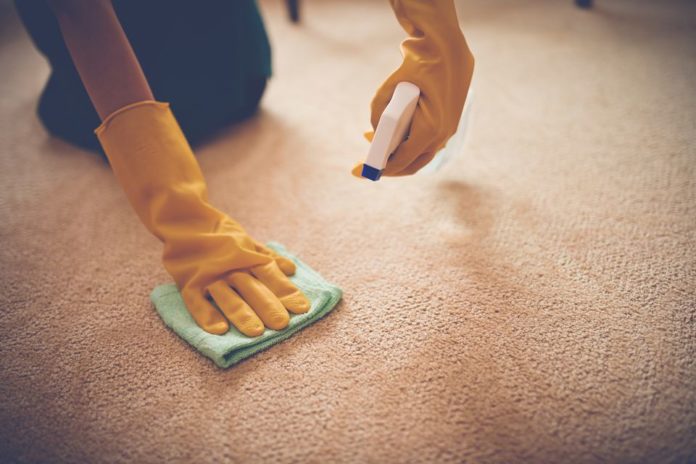Did you spill the gravy on your cloth or maybe the carpet? Are you tensed that you have ruined it forever? We all have been there at some point in our life. If you know how to spot clean a stain on carpets and clothes, you will become a laundry hero and save the day. Spot cleaning methods can save your life when you have stained your favorite dress that you will wear tonight. Learn everything about spot cleaning and how to do it on different clothing items.
What Is Spot Cleaning?

Spot cleaning refers to cleaning or treating only the part of the stained garment. Different stains require different cleaning products. You must know how to spot clean properly to avoid a big disaster.
The spot cleaning method is usually used on intricate clothing items like a beaded dress. Spot cleaning helps to eliminate all the stains without damaging the beads on the dress. Spot cleaning does not work on every fabric, and spot cleaning silk may leave a watermark. Heading to a professional is what you should consider first before doing it yourself. There are various methods for spot cleaning, like sponging or using a convenient stain removal pen when outside. Let us learn how to spot and clean different clothing items step by step.
How to Spot Clean Stains on Clothes
Before starting, always remove the excess blob of butter or gravy using a spoon or knife. If you rub the stain, it will seep deeper into the fabric. Use a napkin or white towel; if the stain is liquid, it will soak in moisture. If you can’t find a towel to soak moisture and oily stains, you can use a bread slice.
Follow these steps to clean stains on clothes:-

- After removing solid blubs of gravy, take a clean paper towel or white cloth. This will help the cleaning product get absorbed, and the stain won’t step further to other parts of the cloth. Never use a colored cloth to absorb moisture, or else you will end up ruining the cloth, and the color will bleed, and you will end up with a new problem on your sleeves.
- Put the stained area facing downwards over a white cloth. You can force the stain onto the white cloth if you work from the other side of the stain.
- Take a small white cloth and dampen it with a cleaning product like a detergent, dry cleaning fluid, water, and stain remover. Pat the stain using the dampened cloth from the wrong side. Start working from the edge of the stain, slowly going toward the center to stop it from spreading.
- When the stain transfers to the absorbent white padding from the stained garment. Move the stain to a clean part of the padding so that stain has a clean place to be transferred. Keep repeating this procedure until no trace of the stain is left and it is all gone.
- Let the damp area dry for some time. If you want it to dry fast, avoid contact with direct heat and use cool breeze-like fans to dry it. High temperatures can make the stain more stubborn and difficult to remove.
- Spot cleaning can save the moment, but you should eventually get the garment thoroughly cleaned by washing or dry cleaning. Make sure you follow the care label recommended by the brand.
How to Spot Clean Upholstery and Carpets

It applies almost the same technique as clothing to spot clean carpets and upholstery. However, it is not possible to place an absorbent cloth under the stains on the carpet. Here are some steps you can try to spot clean carpets and upholstery:-
- Use a knife to remove solid matters of stain from the carpet and upholstery. Avoid rubbing the stain; it will seep deep into the carpet.
- Using a paper towel or white cloth, try blotting the moisture out as much as possible.
- Follow tips for stain removal specified for particular stains to avoid further disaster.
- Start from the edge of the stain, working inwards toward the center to stop spreading the stain further.
- Use cleaning products in as small amounts and little moisture as possible.
- Avoid keeping the stain in the direct heating. Use a gentle air-drying method to dry the damp area.

















